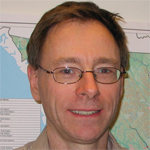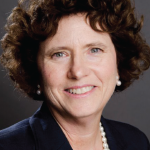If you thought the presidential election was a tough choice, imagine selecting this year’s slate of ACR/ARHP award winners.
At the 2016 ACR/ARHP Annual Meeting in Washington this November, the ACR and the ARHP honored a group of distinguished individuals who have made significant contributions to rheumatology research, education and patient care. In this issue, The Rheumatologist reports on the ARHP awards. Honorees offered their thoughts via email and phone interviews. Next month, we speak with the ACR winners about their individual contributions to Advancing Rheumatology!, as well as to the new class of fellows.
Without further ado …
ARHP Distinguished Scholar Award
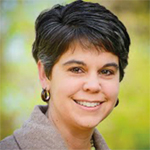 Kelli Allen, PhD
Kelli Allen, PhD
Research Professor of Medicine, Thurston Arthritis Research Center, University of North Carolina at Chapel Hill; Research Scientist, Center for Health Services Research in Primary Care, Department of Veterans Affairs Medical Center, Durham, N.C.
Background: Dr. Allen studied exercise science at Penn State University, earned her master’s in health and sport science at Wake Forest University and, after working as a research-based exercise physiologist, obtained her doctoral degree in behavioral health at Penn State. She then completed a fellowship at the Durham VA Medical Center.
She says the most fulfilling part of working in the field is “helping people with rheumatic conditions” and adding to the evidence “about what works best to improve outcomes.”
A past recipient of a Rheumatology Research Foundation new investigator award, her work centers on improving outcomes in patients with osteoarthritis and other musculoskeletal conditions. She has chaired the ARHP Research Subcommittee, and served on the ARHP Executive Committee, the ACR Committee on Research and the ACR Committee on Journal Publications.
The most fulfilling part of working in the field is ‘helping people with rheumatic conditions’ & adding to the evidence ‘about what works best to improve outcomes.’ —Dr. Allen
Q: In summing up your work, what is the elevator speech you would give to a group of peers at a scientific meeting?
A: My work aims to identify effective behavioral and health services interventions for people with osteoarthritis and other musculoskeletal and rheumatologic conditions, and to develop methods for implementing and disseminating these interventions in real-world clinical and community settings.
Q: What advice do you have for the next generation of rheumatology health professionals?
A: It takes a village, and a good one, to succeed in this profession and make an impact. Seek out excellent mentors, and collaborate as much as you can with people you see being successful in the types of things you are looking to do.
Q: Mentorship is extremely important to the practice of medicine these days. What is the value of mentoring? What lessons did you learn from your mentor?
A: Excellent mentorship is foundational, critical. Mentors help you identify meaningful research questions and the best ways to answer them. They also play a critical role in helping you navigate a host of career-related decisions and challenges. I’ve had a number of different mentors in different areas, and they’ve each taught me different things. They have played a huge role in helping me learn how to write a successful grant proposal and helping me to carry that out.
Q: What has the ACR/ARHP meant to you?
A: ARHP has been such a great professional community. I’ve been privileged to serve alongside so many committed researchers and clinicians on various committees. It’s been a great experience to be part of the larger community that seeks to improve the care and lives of people with rheumatic disease.
ARHP Distinguished Educator Award
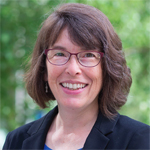 Cynthia Crowson, MS
Cynthia Crowson, MS
Associate Professor and Statistician, Mayo Clinic, Rochester, Minn.
Background: Statistician isn’t a term laymen associate with rheumatology. But Ms. Crowson has been doing both for more than 25 years. An average day involves analyzing data from research studies involving rheumatologic diseases.
“I help with all parts of the research process, including study design, grant and protocol development, data collection plans, finding inconsistencies in data, analyzing data, preparing abstracts, manuscript, presentations and posters,” she says.
Ms. Crowson earned a bachelor’s degree from Winona State University in 1989 and followed up with a master’s degree in statistics from Iowa State University in 2005. She’s presented more than 20 times at ACR/ARHP Annual Meetings and became an ARHP member in 2010.
‘I would like to see more statisticians involved in rheumatic disease research. Research studies are becoming increasingly complex, and researchers who perform their own statistical analyses are not always aware of the latest statistical techniques.’ —Ms. Crowson
Q: How did you go from a math degree to rheumatology?
A: Statistics is a very flexible field that can be applied to a wide variety of other fields. Statistics are used in medicine to help us understand diseases and who is affected by them, as well as to help with medical decision making through analyses of randomized trials to assess competing treatments and observational studies to determine risks for various outcomes.
Q: How did you make the transition from statistics to epidemiology?
A: Statistics and epidemiology are actually closely inter-related. Epidemiology is the study of populations. Summarizing data from populations is a key part of a statistician’s role. I became involved in epidemiology because of the Rochester Epidemiology Project here, which is a wonderful and unique resource that allows us to combine data from Mayo Clinic and other medical providers to study diseases among the residents of Olmsted County, Minn.
Q: If you could change one thing about the field of rheumatology, what would it be?
A: I would like to see more statisticians involved in rheumatic disease research. Research studies are becoming increasingly complex, and researchers who perform their own statistical analyses are not always aware of the latest statistical techniques to allow them to perform the optimal analyses of their research data.
Q: If you could change one thing about the field of statistics, what would it be?
A: Statisticians involved in medical research should not constrain themselves to providing the service of ‘crunching the numbers’ with limited understanding of the disease they are studying. I believe involvement in the entire research process from study conception to completion is essential. Having a deep understanding of the disease will help the statistician advance the field they work in and enable them to contribute to development of important research questions as well as better analyses that provide more meaningful results for clinicians and patients.
ARHP President’s Award
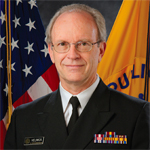 Charles “Chad” Helmick, MD
Charles “Chad” Helmick, MD
Medical Epidemiologist, Arthritis Program, Centers for Disease Control & Prevention (CDC), Atlanta
Background: A career spent in public health service has taught Dr. Helmick that no one does it alone. “We in public health are motivated by the importance of our work, but don’t expect much recognition,” he says. “When it occurs … it is unexpected and, therefore, extra satisfying. Plus, it reflects on the group effort that comprises public health, not just on me or a single person.”
Not to say that Dr. Helmick hasn’t earned the honor. He joined the CDC’s Epidemic Intelligence Service (EIS) training program in 1979. He’s spent many years since promoting the “collaboration between medicine and public health … to make sure the good things that we know can help people with rheumatic diseases are easily available to them.”
‘We in public health are motivated by the importance of our work, but don’t expect much recognition.’ —Dr. Helmick
Q: Your career started with EIS. Basically, you wanted to be a disease detective. What about that thrill of the hunt appealed to you then?
A: The thrill of EIS was being on the front lines of interesting problems that were of public health importance and/or in the news. It was a chance to be among the first people dealing with brand new problems. That feeling persists in a way even in my work today, where so little is known about arthritis public health, or how arthritis affects the population—not the individual—and how population-level interventions can help. A lot can be learned from the public health perspective that can help researchers, healthcare systems and payers, and those with arthritis—and that remains thrilling.
Q: How has your desire to answer questions changed over the years?
A: My early career focused more on answering questions on infectious diseases, sometimes with great urgency. Over the years, my career has evolved to focus more on questions relating to the bigger, less urgent public health problems. Arthritis is a great example—a big public health problem that isn’t sufficiently “urgent” to get resources commensurate with the problem. We hope to change that someday.
Q: You can’t preach the benefits of exercise enough to patients and providers. Why are you so passionate about that message?
A: Physical activity is good for everyone and has many, many benefits for people with arthritis. Regular physical activity reduces joint pain, helps people feel better and helps manage (and possibly prevent) some of the other conditions that commonly occur with arthritis, such as heart disease, diabetes and obesity. From a public health perspective, regular physical activity is almost a magic bullet—so many positive results with no drug side effects!
ARHP Distinguished Scholar Award
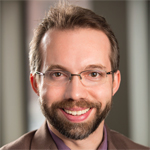 Kaleb Michaud, PhD
Kaleb Michaud, PhD
Associate Professor, University of Nebraska Medical Center, Omaha, Neb., co-director, National Data Bank for Rheumatic Diseases, Wichita, Kan.
Background: Dr. Michaud was introduced to rheumatic diseases at an early age—as a patient. But it wasn’t until his long-time clinician, Fred Wolfe, MD, offered him a job as a statistician that he realized rheumatology was his true calling.
“I loved getting my hands dirty, in the data, writing programs and code. After my first ACR meeting, it really sank in,” Dr. Michaud says. “I could not have had a more inspiring mentor. He did an amazing job teaching me so much about rheumatology and transforming my frustrations as a patient into enthusiasm as a researcher. When I went back to finish my PhD, I changed fields, and my new advisors taught me so much about medical economics and medical decision making.”
From small-town Kansas to Stanford University to his current position at UNMC, Dr. Michaud has carved out a career as a “methodologist around observational and longitudinal databases.”
He has co-authored 135 scholarly articles in the areas of patient-reported outcomes in research, clinical care and education. He’s been an active member of ARHP since 2001, participating in various volunteer efforts, including the task force that created the ACR’s Rheumatology Informatics System for Effectiveness (RISE) Registry.
“This award is a really big honor,” he says, adding it took a while for the award notification to sink in, but when it did, he did a “happy dance. … It’s pretty awesome.”
‘To me, it makes no sense not to connect all of the rheumatologist clinics together. We can learn so much from RISE. Now, it is about connecting & learning.’ —Dr. Michaud
Q: You helped create RISE, still serve on the committee that oversees it and say you want to “ensure it is successful.” Why such a passion for RISE?
A: To me, it makes no sense not to connect all of the rheumatologist clinics together. We can learn so much from RISE. Now, it is about connecting and learning.
Q: What is the most fulfilling part of your day job?
A: I really like it when I can teach somebody something new, in a way that makes sense to them.
Q: What is the most challenging part of your job?
A: Making time to do all that I want to do.
Q: What has ARHP meant to you?
A: It has been a great way to connect with like-minded folks from around the world, to work together on improving life for so many patients. Without it, you don’t have your guidelines, your recommendations, the great ACR and EULAR meetings. Those have been the centerpieces for my field.
Q: What advice do you have for the next generation of ARHP members?
A: The biggest challenge is time management. If you are excited about rheumatology, then take that energy and get involved to make a real difference.
ARHP Lifetime Achievement Award
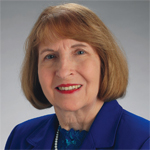 Geri Neuberger, RN, MN, EdD
Geri Neuberger, RN, MN, EdD
Professor Emerita, University of Kansas School of Nursing, Kansas City
Background: There’s not much Dr. Neuberger hasn’t accomplished in her career—which pretty well explains the Lifetime Achievement honor. She was an educator at Kansas for 40 years before retiring in 2015, and along the way, her ARHP peers awarded her the Master Educator Award and the President’s Award.
In a field where people always clamor for more practitioners, Dr. Neuberger has been chair or a committee member for 11 theses, 42 master’s degree projects and 11 PhD dissertations. And five years ago, she established an endowment fund to send one high-performing nurse-to-be each year to a Midwest nursing conference.
“I enjoyed working with students who were excited to learn and had so much to offer to the nursing profession,” she says. “I learned from them, and I think they learned from me. They each represented the future of the profession and had unique talents that inspired me to be a better teacher.”
Her passion comes, in part, from seeing what the diseases can do firsthand. She was studying to be a nurse when her mother was diagnosed with rheumatoid arthritis (RA). Then, her sister was also diagnosed with RA. Her thesis and doctoral dissertation focused on arthritis, and a lifetime of achievement kicked off.
‘I really like the interprofessional contacts that I have with ARHP. I get to know PTs, OTs, psychologists & numerous other disciplines that work with persons with rheumatic diseases.’ —Dr. Neuberger
Q: You’ve been in ARHP since 1977. What keeps you going?
A: I really like the interprofessional contacts that I have with ARHP. I get to know PTs, OTs, psychologists and numerous other disciplines that work with persons with rheumatic diseases. I have learned much from their presentations at national meetings and through interactions with them at committees that I have served on.
Q: There’s an endowment in your name. How proud of that are you?
A: This fund is providing the opportunity for nursing students to attend an annual meeting in which research presentations are presented by nurses. I am hopeful that this meeting will inspire some of these students to seek PhD degrees in nursing and become active as faculty members who also conduct research. There is a current shortage of PhD-prepared nurses.
Q: How would more PhD-prepared nurses help the field?
A: More nurses would be prepared to apply for NIH funding of their research. A PhD
degree is considered the research degree for nurses, and more nurses with PhDs will add to the increased number of nurse scientists.
ARHP Addie Thomas Service Award
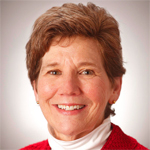 Carol Oatis, PT, PhD
Carol Oatis, PT, PhD
Professor, Department of Physical Therapy, Arcadia University, Glenside, Pa.
Background: Dr. Oatis’ first job as a physical therapist was on the rheumatology service of a large rehabilitation facility in Southern California. “I was treating adults solely with arthritis, and I was fascinated by it,” she says. “Quite frankly, that experience colored my career ever since.”
Known for her textbook, Kinesiology: The Mechanics and Pathomechanics of Human Movement, Dr. Oatis’ research focuses on the functional deficits associated with knee osteoarthritis. In 1982, she earned her PhD from the University of Pennsylvania in Philadelphia, where she still resides. She served as ARHP president in 2005. She works closely with the Arthritis Foundation and the U.S. Bone and Joint Initiative and contributed to various ACR, ARHP and Rheumatology Research Foundation committees.
As the science of physical therapy (PT) has evolved over the last 25 years, the challenge is to make sure PT students get enough rheumatology content while they get so many other areas, as the practice expands. —Dr. Oatis
Q: Your award, named after ARHP’s first board president, honors volunteers involved in local, regional and national arthritis-related activities. What does that mean to you?
A: It is extremely gratifying and humbling. To be recognized by my friends and peers, as someone who has given back, I really appreciate it. But I have gotten back more than I have given. It has been wonderful to work with colleagues in ARHP and ACR. That has really been a gift. So to be recognized for this gift I received is really wonderful.
Q: What about rheumatology keeps you so engaged?
A: ARHP has really helped keep me engaged. Patients are engaging, and the science is engaging. The association has been a marvelous place to develop—partly because it is inter-disciplinary … an approach that has been meaningful to me since the start of my career. The ARHP and ACR really manifest that approach, too.
Q: What is the most challenging part of your job?
A: As the science of physical therapy (PT) has evolved over the last 25 years, the challenge is to make sure PT students get enough rheumatology content while they get so many other areas, as the practice expands. The other huge challenge is balancing education and research, and getting the funding to do the research.
Q: What is the most fulfilling part of your job?
A: Watching PT students grow into fine clinicians, caring clinicians and some researchers, I have had the opportunity to bring lots of PT students to ARHP meetings to present our research. It’s been a joy to see them participate as colleagues and have the opportunity to participate in this inter-professional organization. They always come away excited about the research but more excited about the collegial relationships they find at the ACR.
Q: What is the value of mentorship?
A: I believe in it more and more every day. With the challenges of healthcare, these novice clinicians really need people they can talk to and look up to. It’s important for us to provide role models … they need support through school, but also beyond school.
ARHP Ann Kunkel Advocacy Award
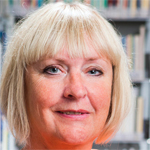 Christina Helging Opava, PhD, RPT
Christina Helging Opava, PhD, RPT
Professor, Karolinska Institutet and Karolinska University Hospital, Stockholm, Sweden
Background: Dr. Opava, who has arthritis herself, has been a physical therapist in primary care, rehabilitation facilities and hospitals throughout Sweden for nearly 40 years. She earned her PhD in 1993 and was named professor at the Karolinska Institutet in 2006.
An ARHP member since 1993, she joined the organization shortly after attending her first ACR/ARHP Annual Meeting. She received the ARHP’s Distinguished Scholar Award in 2002, an honor she considers a milestone in her career. Her latest achievement recognizes ARHP members who make significant contributions to rheumatology research, education and patient care.
“Ever since I attended my first ARHP meeting, in Atlanta as a PhD student back in 1992, I have been generously included in this great community, not least by Drs. Marian Minor and Kate Lorig, two admired colleagues that I wrote to before taking off [for that meeting]. They and many other ARHP members have shared their knowledge with me, and quite a few have visited with me in Stockholm and become great friends,” Dr. Opava says.
Dr. Opava has authored 70 original papers in peer-reviewed publications, contributed to textbooks and supervised 11 PhD students to graduation. Her research focuses on physical activity and health in rheumatic disease, and she spent a semester as visiting professor at the University of Missouri in Columbia. Her voice extends beyond the classroom and publications, as she routinely advocated for improved rheumatic care on Swedish television, radio and other media outlets.
A past board member of the Swedish Rheumatism Association, she has been the vice president of EULAR since 2013.
‘During my training to be a physical therapist, I was diagnosed with rheumatoid arthritis, but not happy about what I learned about its
rehabilitation. I wanted to change clinical practice by advocacy, research & implementation.’ —Dr. Opava
Q: What sparked your interest in rheumatology?
A: During my training to be a physical therapist, I was diagnosed with rheumatoid arthritis, but not happy about what I learned about its rehabilitation. I wanted to change clinical practice by advocacy, research and implementation.
Q: This award is voted on by your peers in the field of rheumatology. What does that mean to you?
A: I know a great deal of the ARHP members and what they have accomplished. It just makes me so happy, humble and overwhelmed to have been chosen for an award among all of these talented and hard-working health professionals.
Q: What advice do you have for the next generation of health professionals working in the field of rheumatology?
A: Listen to your patients; they are the true experts. Your professional knowledge is an important complement, if you get the communication right.
ARHP Distinguished Clinician Award
 Christine Stamatos, DNP, ANP-C
Christine Stamatos, DNP, ANP-C
Director, Fibromyalgia Wellness Center, Northwell Health Division of Rheumatology, Great Neck, N.Y.
Background: After nearly two decades as a critical-care nurse, Christine Stamatos became a nurse practitioner and joined a rheumatology practice. She immediately bonded with the patients and “challenging conditions,” and never looked back. In fact, over time she found herself challenged by those patients with persistent pain and went back to obtain her doctor of nursing practice, a DNP.
“I love the diverse nature of the conditions we treat and the multidisciplinary coordination that is required to effectively help patients and their families manage their conditions,” Dr. Stamatos says. “I love learning new things, asking questions, finding answers and helping patients understand all this. My absolute favorite part of every day is when a patient expresses that they now understand and are able to become an active member of the healthcare team.”
In addition to her clinical work and leadership roles in the Army Nurses Corp, trauma centers and various rheumatology practices, Dr. Stamatos has been an educator and lecturer, publishing research focused on geriatric responses to trauma and chronic pain in arthritis. She has served on various ARHP committees, and currently is part of a task force working to develop an NP/PA fellowship program.
‘My absolute favorite part of every day is when a patient expresses that they now understand & are able to become an active member of the healthcare team.’ —Ms. Stamatos
Q: Your award is from your peers for a career dedicated to the field of rheumatology, either in research or practice. What does that mean to you?
A: It means more than I could ever express in words. When I first heard that I had been nominated by a physical therapist I had met through ARHP, one that I had tremendous respect for as a clinician and a mentor, I was absolutely honored. To be included for consideration for this award was more than adequate; then when I heard that I had received the award, I was just so proud, proud to be a recognized by a group of my peers.
Q: What is the most challenging aspect in today’s practice of rheumatology?
A: Every time I’m asked this question, the first thing I come up with is time. We work with patients and their families that are faced with very scary, complex conditions that have an impact on every aspect of their lives. We are tasked to help them understand these often mysterious diseases, and help them navigate the challenges of diagnosis, treatment, rehabilitation. … There are so many factors that go into successfully managing these challenges. I am forever frustrated with the time we are afforded patients for routine office visits. It is often wholly insufficient. I struggle every day to keep on schedule, usually not successfully.
Q: What advice do you have for the next generation of rheumatologists?
A: To care, to ask questions, to make connections with your patients and families. Never stop asking why.
ARHP Graduate Student Award
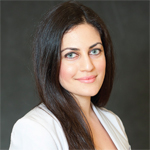 Shadi Gholizadeh, MSc, MS
Shadi Gholizadeh, MSc, MS
Background: Systemic sclerosis and body image isn’t a juncture that has much research—yet. But with a doctoral degree and a master’s in public health both in progress at San Diego State University, Ms. Gholizadeh aims to do her part to change that.
“Until recently, the study of body image had largely been limited to the context of physically healthy, college-aged women,” she says. “It is exciting to have the opportunity to contribute to the growing field of body image in men and women with chronic illnesses through my research in body image in scleroderma.”
Ms. Gholizadeh was drawn to the idea of chronic illnesses, especially in under-researched and rare diseases, given her clinical psychology doctoral work in behavioral medicine. The work clearly suits her.
“I found the research in body image in scleroderma to be extremely rewarding and with the potential to make a meaningful impact in the lives of the women and men with scleroderma and other rheumatologic diseases that cause changes in appearance,” she says.
‘It is exciting to have the opportunity to contribute to the growing field of body image in men & women with chronic illnesses through my research in body image in scleroderma.’—Ms. Gholizadeh
Q: What is the most fulfilling part of your job?
A: I am grateful every day that I have the opportunity to be a full-time student of psychology and epidemiology and to be surrounded by so many brilliant and inspiring individuals through the research and clinical work that I do. As part of the Scleroderma Patient-Centered Intervention Network (SPIN), I am involved in so many exciting research endeavors and have the opportunity to collaborate with some truly exceptional minds in rheumatology, nursing, public health and patient advocacy.
Q: What is the best advice you’ve gotten so far?
A: I have been told on several occasions that it is critical to choose one area of research and try to maintain a laser focus on that one area; this advice is always striking to hear, because it is a reminder of how much I (respectfully) disagree! For me, having varied interests and areas of focus has allowed me to view research endeavors from multiple vantage points and borrow methodologies from other disciplines.
Q: If you could change one thing about the field of rheumatology, what would it be?
A: As a student of clinical psychology and epidemiology, I am always seeking ways to involve individuals who have their own unique perspectives on a project in my research. … Increasing interdisciplinary and cross-disciplinary collaborations and communication and encouraging such endeavors would enhance the quality, relevance and accessibility of rheumatologic research.
ARHP Graduate Student Award
 Alexandra Wink, MS
Alexandra Wink, MS
Background: As a doctoral candidate in the Boston University School of Medicine, Ms. Wink’s dissertation work has focused on osteoarthritis. She chose her focus well.
One of her papers was recognized as a “highest scorer among junior investigators” at the 2016 Osteoarthritis Research Society (OARSI) World Conference in Amsterdam. She has already applied for several grants from the National Institute of Arthritis and Musculoskeletal and Skin Diseases (NIAMS). And, if one of her advisers is any judge, she’ll do just fine.
“Without a doubt, Alex is the most promising young arthritis researchers that I have yet had the pleasure of knowing,” her nominating letter read.
Ms. Wink is a bit more modest. “Right now, I’m hoping most to graduate in the next two years,” she says. “After that, I’d like to obtain a faculty position where I can continue to research the role of human movement in joint health as well as pursue my love of teaching.
‘In the midst of PhD life, it’s sometimes hard to imagine that your work is important or interesting to anyone beyond yourself, so being recognized by my peers for my efforts is very meaningful.’ —Ms. Wink
Q: What is it about rheumatology that keeps you so engaged?
A: Certainly, having a dissertation to complete keeps me motivated. I work with a great group of mentors and peers and there’s constant encouragement to publish and present our work anywhere from the university level to an international level.
Q: What does an award at this point in your career—one given by peers—mean to you?
A: I feel very honored to be a recipient of the ARHP Graduate Student Award. In the midst of PhD life, it’s sometimes hard to imagine that your work is important or interesting to anyone beyond yourself, so being recognized by my peers for my efforts is very meaningful.
Q: What is the most fulfilling part of your job?
A: In addition to being a graduate researcher, I also teach anatomy to medical and other professional students. Being able to educate future clinicians and to get them excited about learning anatomy is probably one of the most exciting and fulfilling aspects of what I do.
Q: What is the best advice you’ve gotten so far?
A: Probably to be patient. Life is long and careers are long and there’s enough time to accomplish and enjoy everything, as long as you don’t expect it to happen immediately.
Richard Quinn is a freelance writer in New Jersey.
Awards & grants
Explore award and grant opportunities available from the ARHP on the ACR/ARHP’s website at http://www.rheumatology.org/Get-Involved/Awards/Health-Professional-Awards.
Information is available for ARHP members for:
- Lifetime Achievement Award;
- Addie Thomas Service Award;
- Ann Kunkel Advocacy Award;
- Distinguished Scholar Award;
- Distinguished Clinician Award;
- Distinguished Educator Award; and
- Other ARHP awards.
